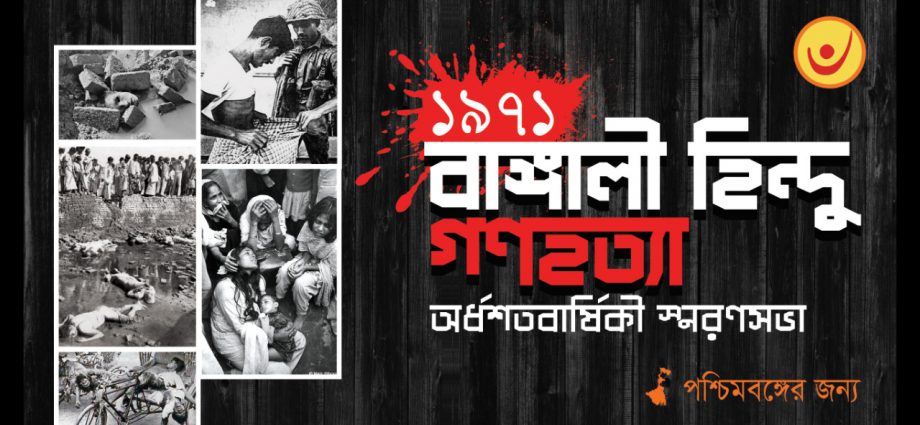In principle, the Hindus as a religious minority community didn’t fit into the scheme of things in the Islamic republic of Pakistan. While West Pakistan was ethnically cleansed of Hindus and Sikhs during the Partition, a fifth of East Pakistan’s population going into the 1960s was still Bengali Hindu in spite of the recurrent persecution and ethnic cleansing. East Pakistan’s demand for cultural autonomy through the recognition of Bengali as the co-official state language or the demand for political autonomy through the Six Point Movement was seen by Pakistan’s ruling elites not only as a threat to the integrity of Pakistan but also as movements being masterminded by the Bengali Hindus. The threat became real after Awami League’s landslide victory in the 1970 national elections. To solve the problem once and for all, they came up with the ‘final solution’ of extermination of three million Bengali Hindus and expulsion of the remainder. The Pakistan military regime decided to use the cover of the civil war in East Pakistan to execute its plan. On 25th March 1971, the Pakistan Army launched Operation Searchlight to take absolute control of the province, which began by neutralization of the East Pakistan based army battalions, border guards, paramilitary & police and massacre of the Hindus. It began with the shelling and massacre of the inmates of Jagannath Hall, the Hindu student’s hostel of Dhaka University, followed by destruction of Hindu neighbourhoods like Shankharibazar, Tantibazar and within 48 hours the decimation of Ramna Kali temple, the icon of Bengali Hindu civilization in East Pakistan. An estimated one hundred thousand Bengali Hindus were massacred within a week of destruction in Dhaka, following which the Army spread out to capture the district towns. Pakistan Army resorted to ‘Kill and Burn’ missions, hunting down the Bengali Hindus from door to door. Hundreds of such massacres took place all across the province. The massacres were accompanied by genocidal rape, loot and destruction of temples. This continued till India officially joined the Bangladesh Liberation War. By that time there were ten million refugees in India, 90% of whom were Bengali Hindus. The death toll of the massacres are variously estimated by independent researchers to be between 50,000 and 1.5 million. The mass killings of the Bengali Hindus with the intent of destruction of the community in parts constitutes a genocide under United Nations Genocide Convention.
The Bangladesh genocide has hitherto been ignored or at most acknowledged only as a Bengali genocide, as a continuing legacy of the positions taken by the major stakeholders of the conflict at that point of time. As we commemorate the fiftieth anniversary of the events, it is time that the events are acknowledged as Bengali Hindu genocide from political, legal and academic standpoints. Governments should work towards ensuring transitional justice for the victims who have been denied any justice till date.
50 YEARS OF 1971 BENGALI HINDU GENOCIDE
Observe 27 March as Bengali Hindu Genocide Remembrance Day
PRESS CONFERENCE at Kolkata Press Club, 3 pm, 26 March 2021
Speakers:
Prof Tathagata Roy, Prof Achintya Biswas, Bimal Pramanik, Dr Mohit Ray

